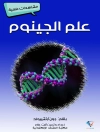This book was written for graduate and medical students, as well as clinicians and postdoctoral researchers. It describes the theory of alternative pre-m RNA splicing in
twelve introductory chapters and then introduces protocols and their theoretical background relevant for experimental research. These 43 practical chapters cover: Basic methods, Detection of splicing events, Analysis of alternative pre-m RNA splicing in vitro and in vivo, Manipulation of splicing events, and Bioinformatic analysis of alternative splicing.
A theoretical introduction and practical guide for molecular biologists, geneticists, clinicians and every researcher interested in alternative splicing.
Website: www.wiley-vch.de/home/splicing
Tabela de Conteúdo
Companion Website: www.wiley-vch.de/home/splicing
INTRODUCTION
Splicing in the RNA World (Emanuele Buratti, Maurizio Romano and Francisco E. Baralle)
RNPs, small RNAs, mi RNAs (Michaela Beitzinger and Gunter Meister)
RNA Elements Involved in Splicing (William F. Mueller and Klemens J. Hertel)
A Structural Biology Perspective of Proteins Involved in Splicing Regulation (Antoine Cléry and Frederic Allain)
The Spliceosome in Constitutive Splicing (Patrizia Fabrizio and Reinhard Lührmann)
The Use of Saccharomyces cerevisiae to Study the Mechanism of pre-m RNA Splicing (Brian C. Rymond)
Challenges in Plant Alternative Splicing (Andrea Barta, Yamile Marquez and John WS Brown)
Alternative Splice Site Selection (Miguel B. Coelho and Christopher WJ Smith)
Integration of Splicing with Nuclear and Cellular Events (Aparna K. Sapra and Carla Neugebauer)
Splicing and Disease (Emanuele Buratti and Francisco E. Baralle)
From Bedside to Bench: How to Analyze a Splicing Mutation (Marco Baralle and Diana Baralle)
Analysis of Splicing Problems (Stefan Stamm)
BASIC METHODS
Ultracentrifugation in the Analysis and Purification by of Spliceosomes Assembled in Vitro
(Klaus Hartmuth, Maria A. van Santen and Reinhard Lührmann)
Chemical Synthesis of RNA (Claudia Höbartner)
RNA Interference (si RNA, Sh RNA) (Daphne S. Cabianca and Davide Gabellini)
Expression and Purification of Splicing Proteins (James Stévenin and Cyril F. Bourgeois)
Detection of RNA-Protein Complexes By Electrophoretic Mobility Shift Assay (Manli Shen and Michael G. Fried)
Functional Analysis of large Exonic Sequences through Iterative in Vivo Selection (Natalia N. Singh, Joonbae Seo and Ravindra N. Singh)
Identification of Splicing cis-Elements through an Ultra-Refined Antisense Microwalk (Ravindra N. Singh and Natalia N. Singh)
Genomic SELEX to Identify RNA Targets of Plant RNA Binding Proteins (Olga Bannikova and Andrea Barta)
DETECTION OF SPLICING EVENTS
Quantification of Alternative Splice Variants (Miriam LLorian and Christopher WJ Smith)
High-Throughput Analysis of Alternative Splicing by RT-PCR (Roscoe Klinck, Benoit Chabot and Sherif Abou Elela)
Monitoring Changes in Plant Alternative Splicing Events (Craig G. Simpson, Naeem Hasan Syed, Sujatha Manthri, John D. Fuller, Monika Maronova, Branislav Kusenda, Maria Kalyna, Andrea Barta and John WS Brown)
Array Analysis (Pierre de la Grange)
The CLIP Method to Study Protein-RNA Interactions in Intact Cells and Tissues (James Tollervey and Jernej Ule)
RNA: Protein Crosslinking and Immunoprecipitation in Yeast (CLIP) (Branislav Kusenda and Andrea Barta)
Identification of Proteins Bound to RNA (Emanuele Buratti)
Single Cell Detection of Splicing Events with Fluorescent Splicing Reporters (Hidehito Kuroyanagi, Akihide Takeuchi, Takayuki Nojima and Masatoshi Hagiwara)
ANALYSIS OF SPLICING IN VITRO
The Preparation of He La Cell Nuclear Extracts (Klaus Hartmuth, Maria A. van Santen, Tanja Rösel, Berthold Kastner and Reinhard Lührmann)
In Vitro Splicing Assays (Akila Mayeda and Adrian R. Krainer)
Assembly of Spliceosomes in Vitro(Klaus Hartmuth, Maria A. van Santen, Peter Odenwälder and Reinhard Lührmann)
Analysis of Site-Specific RNA-Protein Interactions (Nathalie Marmier-Gourrier, Audrey Vautrin, Christiane Branlant and Isabelle Behm-Ansmant)
Immunoprecipitation and Pull-Down of Nuclear Proteins
(Natalya Benderska, Chiranthani Sumanasekera and Stefan Stamm)
Analysis of Protein (RNA) Complexes by (Quantitative) Mass Spec Analysis (Carla Schmidt and Henning Urlaub)
ANALYSIS OF SPLICING IN VIVO
Fast cloning of splicing reporter minigenes (Zhaiyi Zhang, Amit Khanna and Stefan Stamm)
In Vivo Splicing Assays (Isabel Cristina López Mejía and Jamal Tazi)
Coupled Promoter Splicing Systems (Manuel J. Muñoz, Manuel de la Mata and Alberto R. Kornblihtt)
Stable Cell Lines With Splicing Reporters (Christian Kroun Damgaard, Søren Lykke-Andersen and Jørgen Kjems)
Splicing Factor Ch IP and Ch RIP: Detection of Splicing and Splicing Factors at Genes by Chrom
Sobre o autor
Stefan Stamm is Associate Professor in the Department for Molecular and Cellular Biochemistry at the University of Kentucky. He studied Biochemistry in Hannover (Germany) and did the practical work for his Ph D as well as postdoctoral work at the Cold Spring Harbor Laboratory, NY. His research focuses on mechanisms and regulation of alternative splicing, with
the aim to apply the fi ndings to the Prader-Willi Syndrome and Spinal Muscular Atrophy.
Chris Smith is Professor of RNA Molecular Biology in the Department of Biochemistry at the University of Cambridge. His Ph D research in Biochemistry was carried out at the University of London, followed by postdoctoral research at Harvard Medical School. His research interests encompass the mechanisms, regulation and function of alternative splicing.
Reinhard Lührmann is Director at the Max Planck Institute for Biophysical Chemistry in Göttingen where he is head of the Department of Cellular Biochemistry. He is an Honorary Professor at the University of Göttingen. He has studied chemistry at the University of Münster where he also received his Ph D. He worked as a postdoctoral fellow at the Max Planck Institute
for Molecular Genetics in Berlin. His research focuses on the structure and mechanism of the spliceosome.












